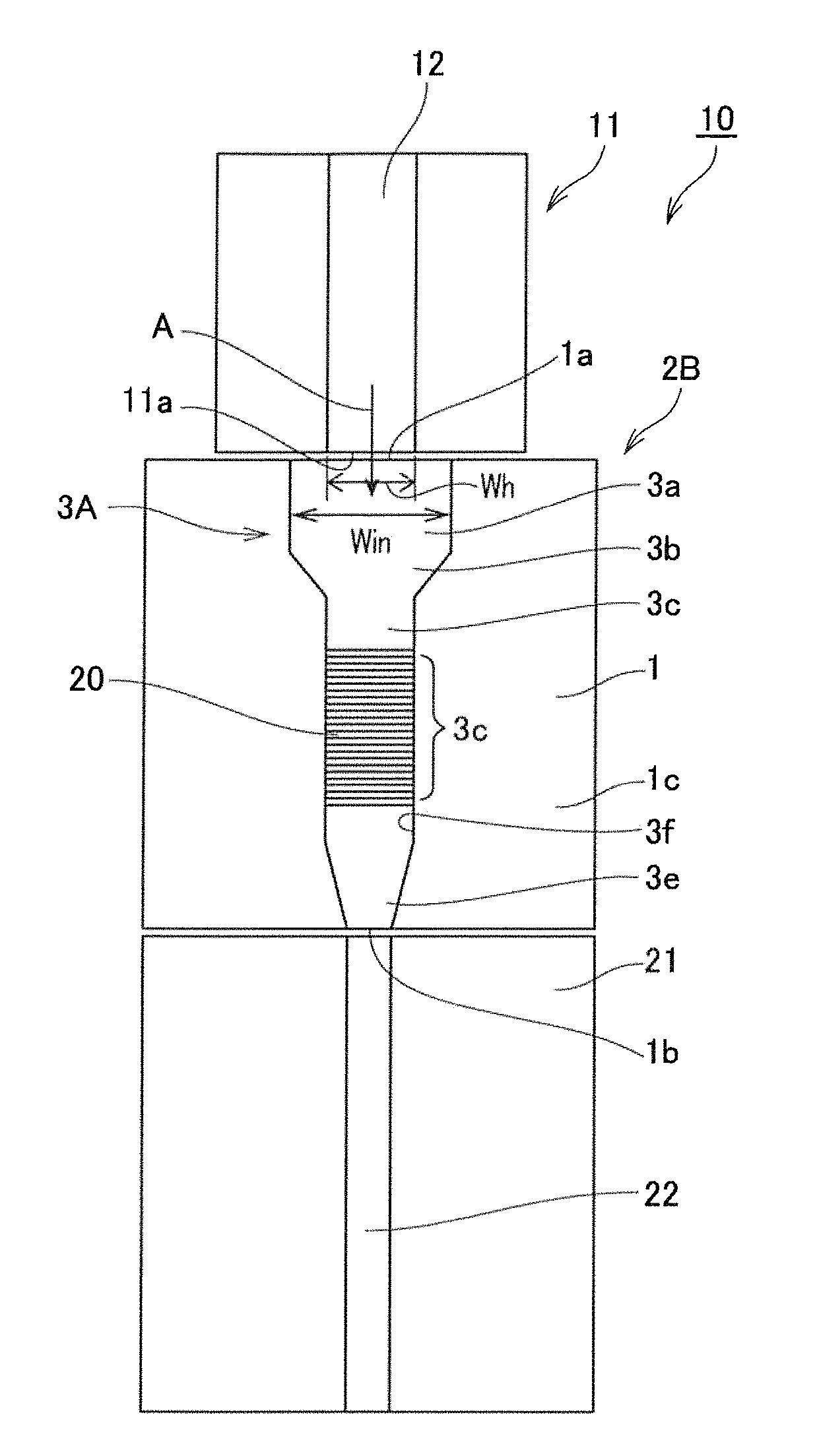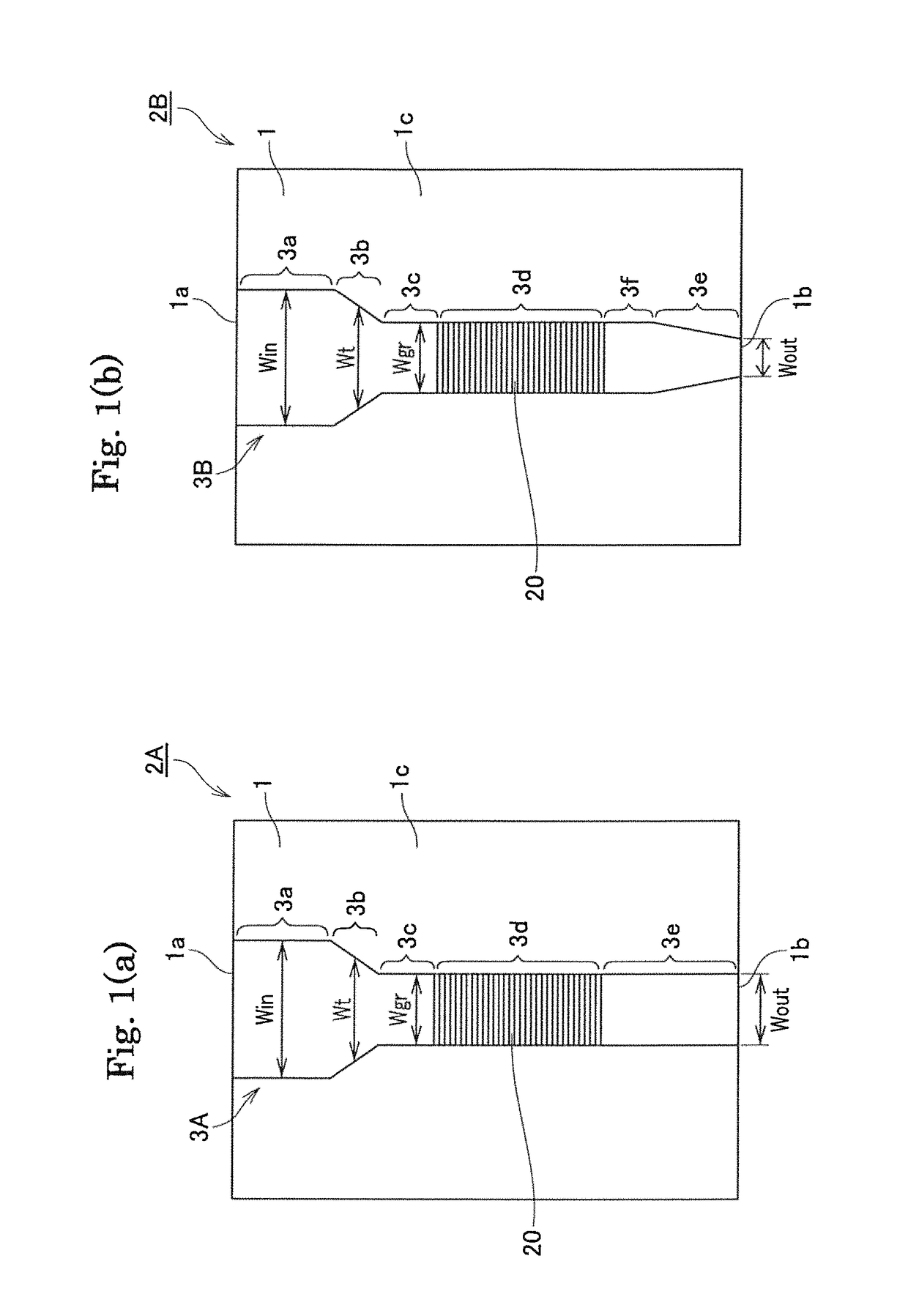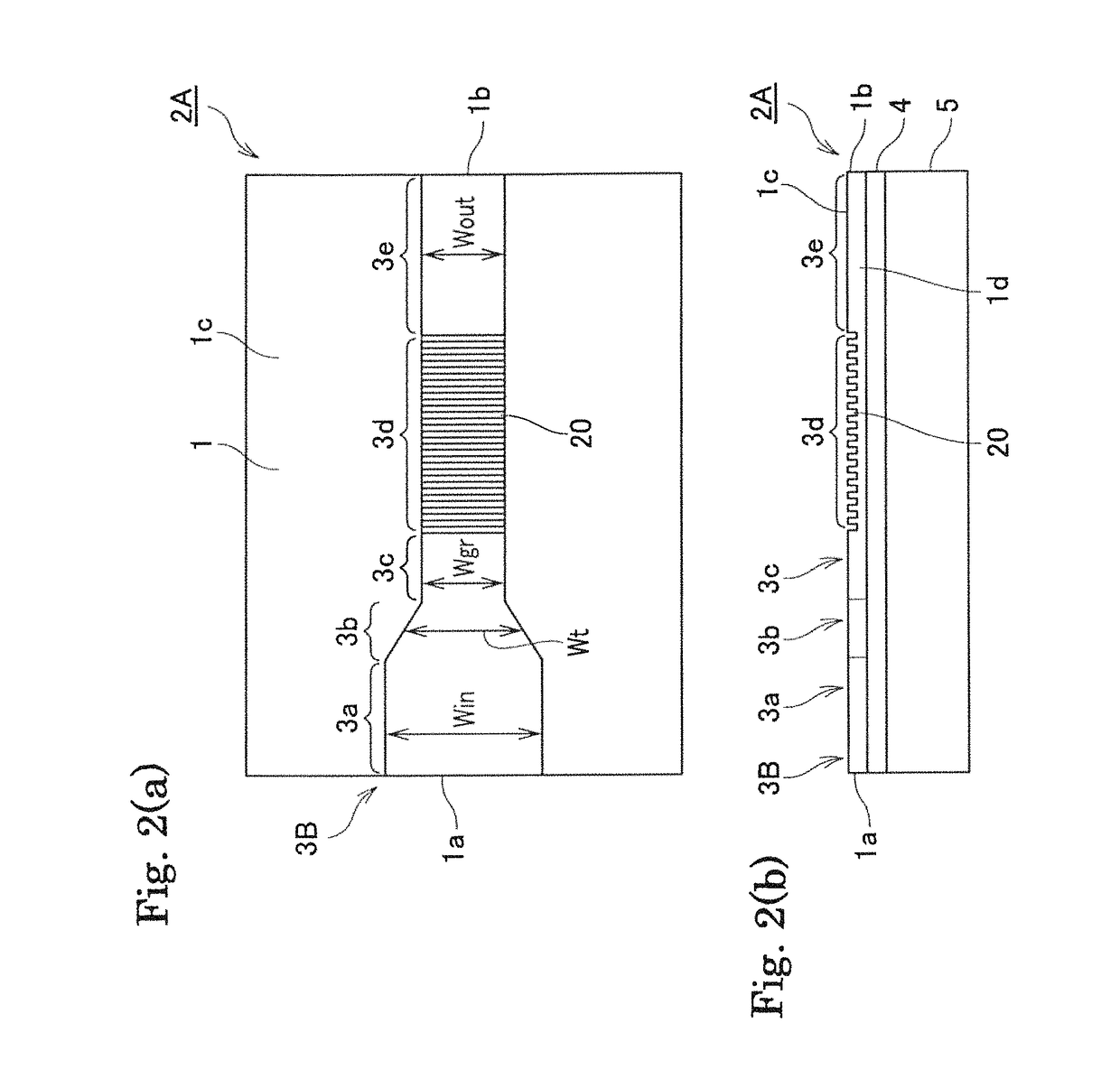Grating element and external resonator type light emitting device
a light emitting device and grating element technology, applied in the direction of optical elements, semiconductor lasers, instruments, etc., can solve problems such as optical intensity change, and achieve the effects of reducing optical power fluctuations, enhancing wavelength stability, and increasing the tolerance of axial misalignmen
- Summary
- Abstract
- Description
- Claims
- Application Information
AI Technical Summary
Benefits of technology
Problems solved by technology
Method used
Image
Examples
example 1
[0202]Grating elements shown in FIGS. 1(a), 2 and 4 was fabricated in the following way.
[0203]Specifically, SiO2 was deposited in a thickness of 1 μm by a sputtering device on a support substrate 5 made of quartz, and Ta2O5 was deposited thereon in a thickness of 2 μm to form an optical material layer 1. Then, Ti was deposited on the optical material layer 1, and a grating pattern was fabricated by the photolithography technique.
[0204]Thereafter, grating grooves were formed at a pitch interval Λ of 205.4 nm with a length Lb of 25 μm by fluorine reactive ion etching using the Ti pattern as a mask. The groove depth td of the grating was set to 100 nm. Further, a waveguide was patterned by the photolithography technique to form a pattern therein, and a ridge groove process was performed by reactive ion etching to form the incident portion with the width Win of 8 μm and the thickness Tr of 1 μm as well as the grating portion with the width Wgr of 3 μm and the thickness Tr of 1 μm. The l...
example 2
[0238]A grating element having the same structure was formed in the same way as in Example 1. However, a ridge groove process was performed to form the light-source input portion with the width Win of 8 μm and the thickness Tr of 1 μm as well as the grating portion with the width Wgr of 2 μm and the thickness Tr of 1 μm. The length from the input end face to the starting point of the grating portion was set at 25 μm.
[0239]Thereafter, the input side and output side of the element were etched down to the quartz substrate by dry etching to thereby make mirror surfaces at end faces thereof. Finally, SiO2 was formed by sputtering to form a single-layer film of 90 nm in thickness at both end faces. At this time, the reflectance of the end face was 3%. The element size was set to have 1 mm width and 100 μm length Lwg.
[0240]Regarding the optical characteristics of the grating element, the reflection characteristics of the grating element were evaluated from the transmission characteristics ...
example 3
[0254]Elements shown in FIGS. 1 (a) and 3 were fabricated in the following way.
[0255]Specifically, SiO2 was deposited in a thickness of 2 μm by a sputtering device on a support substrate 5 made of quartz, and Ta2O5 was deposited thereon in a thickness of 2 μm to thereby form an optical material layer 1. Then, Ti was deposited on the optical material layer 1, and a grating pattern was fabricated by the photolithography technique. Thereafter, grating grooves were formed at a pitch interval Λ of 205.4 nm with a length Lb of 25 μm by the fluorine reactive ion etching using the Ti pattern as a mask. The groove depth td of the grating was set to 100 nm. Further, a waveguide was patterned by the photolithography technique to form a pattern therein, and a ridge groove process was performed by the reactive ion etching to form the incident portion with the width Win of 8 μm and the thickness Tr of 1.6 μm as well as the grating portion with the width Wgr of 3 μm and the thickness Tr of 1.6 μm....
PUM
 Login to View More
Login to View More Abstract
Description
Claims
Application Information
 Login to View More
Login to View More - R&D
- Intellectual Property
- Life Sciences
- Materials
- Tech Scout
- Unparalleled Data Quality
- Higher Quality Content
- 60% Fewer Hallucinations
Browse by: Latest US Patents, China's latest patents, Technical Efficacy Thesaurus, Application Domain, Technology Topic, Popular Technical Reports.
© 2025 PatSnap. All rights reserved.Legal|Privacy policy|Modern Slavery Act Transparency Statement|Sitemap|About US| Contact US: help@patsnap.com



